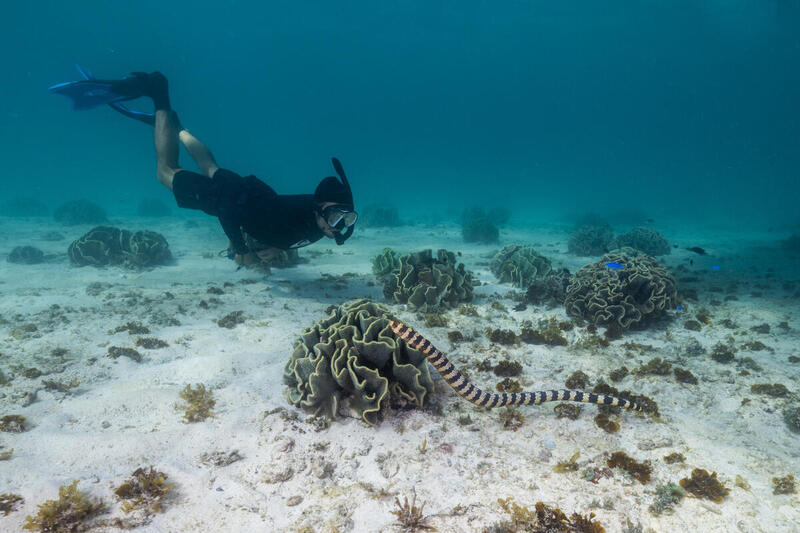Shark Bay, located at the most westerly point of Australia, is one of a handful of marine World Heritage sites across the globe. It’s home to some of the planet’s most extraordinary creatures, including the oldest lifeforms on Earth, as well as dugongs, turtles and, of course, sharks.

We’ve come to Shark Bay with marine scientist Dr Olaf Meynecke to document one of this area’s many incredible wild features – the lush seagrass meadows that provide habitat, food and shelter for marine wildlife. Seagrasses are aquatic flowering plants that form meadows in coastal waters, creating vital ecosystems for ocean health.
Seagrass is also one of the most important blue carbon sinks, vital to tackling climate change. Per hectare, seagrasses can store up to twice as much carbon than terrestrial forests. Research estimates the global seagrass ecosystem organic carbon pool could be as high as 19.9 billion metric tons.
Shark Bay’s seagrass bank covers 1030 square kilometres, making it the largest seagrass meadow in the world. It provides food and shelter for around 10,000 dugongs who make their home in the bay – that’s 10 per cent of the world’s entire dugong population.
As the RHIBs speed away from the Rainbow Warrior towards Shark Bay, loggerhead turtles surface close to the boat, bobbing for an instant before darting back to the azure depths.
It doesn’t take long for the first dugong sighting, spotted by a member of our team a short snorkel away from the boat. Dugongs, commonly known as “sea cows”, are the peaceful grazers of the ocean, and they depend on healthy sea grass to survive.
If there is not enough seagrass to eat then, it affects the dugong’s breeding cycle. And that means that climate change, driven by burning fossil fuels, poses a particular risk to these gentle creatures.
In 2011 Shark Bay was hit by a catastrophic marine heatwave that destroyed 900 square kilometres of seagrass. Shark Bay was recently rated one of the World Heritage Areas with the highest vulnerability to climate change, using the Climate Change Vulnerability Index.
A high likelihood of extreme marine heat events, such as the 2011 event that destroyed so much seagrass, is predicted to have catastrophic consequences in Shark Bay. The region is also threatened by increasingly frequent and intense storms, and warming air temperatures.
But for now, Shark Bay is healthy and teeming with life. And that includes a thriving shark population.
Making our way back to the Rainbow Warrior, Dr Meynecke spots circling seabirds, which have gathered to feast on a bait ball, a silvery, tightly packed mass of thousands of fish. Dropping into the water to document it, our team encounters several large bronze whalers circling in close to investigate these strange creatures who’ve interrupted their lunch. The team is elated by their encounter with the ocean’s apex predator – but quick to make their way back to the boat when the sharks come a little too close for comfort.
Fossil fuel company Woodside’s dangerous plans for the Burrup Hub put the magnificent creatures that inhabit Shark Bay at risk. Climate change is causing more frequent and intense marine heatwaves, with the world’s ocean surface temperatures recently hitting record highs. This could have lethal consequences for the seagrass meadows of Shark Bay.
Woodside’s Burrup Hub would produce twelve times Australia’s annual greenhouse gas emissions if it goes ahead, posing an unacceptable risk to this unique and special place.
Shark Bay is like nowhere on earth. We must act to protect it.
By Fiona Ivits

